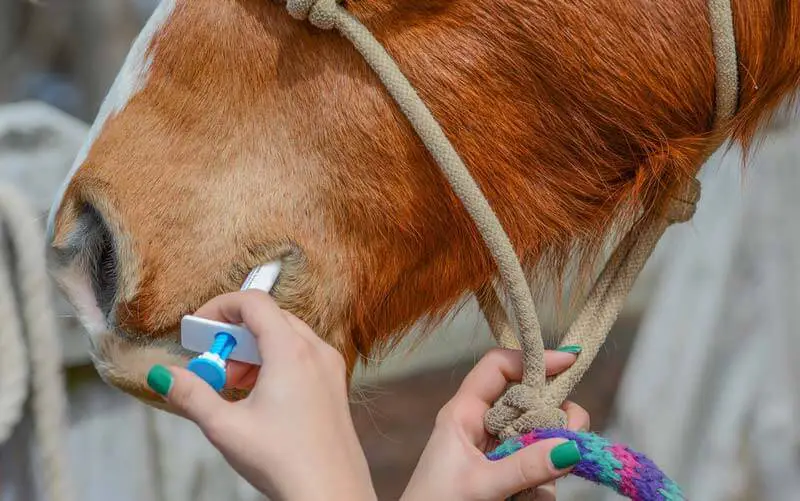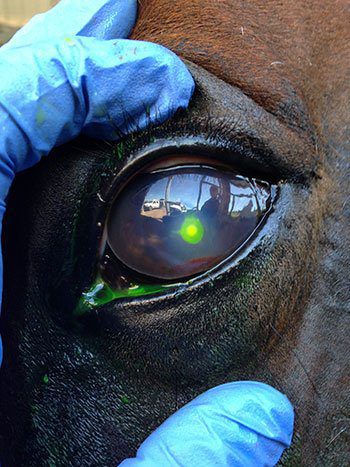
As a horse owner, it can be scary to see your equine companion experiencing health issues. One condition that can affect horses as they age is Cushing’s disease, also known as pituitary pars intermedia dysfunction (PPID). This disease is caused by a malfunction in the pituitary gland, which can lead to a variety of symptoms and health problems.
If you suspect that your horse may have Cushing’s disease, it’s important to seek veterinary care right away. There are a variety of treatment options available, including medication and management changes, that can help manage the symptoms of the disease and improve your horse’s quality of life. However, diagnosing Cushing’s disease can be tricky, as the symptoms can be similar to those of other conditions. In this article, I will explore the signs and symptoms of Cushing’s disease in horses, as well as the diagnostic tests and treatment options available.
What is Cushing’s Disease?
Cushing’s Disease is a hormonal disorder that affects horses and is caused by an overproduction of cortisol, a hormone that regulates metabolism and the immune system. This condition is also known as Pituitary Pars Intermedia Dysfunction (PPID) or Equine Cushing’s Syndrome.
Cushing’s Disease is most commonly seen in horses over the age of 15, but it can occur in younger horses as well. It is more prevalent in certain breeds, such as ponies and draft horses, and is more common in mares than geldings or stallions.
Some of the common clinical signs of Cushing’s Disease in horses include a long, curly haircoat that doesn’t shed out properly in the spring, excessive sweating, increased thirst and urination, muscle wasting, lethargy, and a pot-bellied appearance.
The exact cause of Cushing’s Disease in horses is not fully understood, but it is believed to be related to dysfunction in the pituitary gland. The pituitary gland is located at the base of the brain and is responsible for producing and regulating hormones that control various bodily functions. In horses with Cushing’s Disease, the pituitary gland produces excessive amounts of adrenocorticotropic hormone (ACTH), which in turn stimulates the adrenal glands to produce excessive amounts of cortisol.
If your horse is young and showing signs of Cushing’s disease they may have another condition called Equine Metabolic Syndrome or EMS. Cushings and EMS can often present very similarly but need to be differentiated for treatment purposes and require a stringent testing regime. EMS can be due to insulin dysregulation or glucose intolerence and testing is required to determine what is at play.
Symptoms of Cushing’s Disease in Horses
As a horse owner, it’s important to be aware of the symptoms of Cushing’s disease. Here are some common signs that your horse may have this condition:
- Excessive thirst and urination
- Weight loss and muscle wasting, particularly along the topline
- Abnormal fat deposits, such as a cresty neck or fat pads around the tailhead
- Sore feet and regular laminitic episodes
- Hooves that grow quickly
- Delayed shedding or failure to shed out completely
- Lethargy and decreased exercise tolerance
- Recurrent infections, such as abscesses or hoof problems
- Abnormal reproductive function, such as irregular cycles or infertility
- Changes in behavior, such as increased irritability or depression
If you notice any of these symptoms in your horse, it’s important to contact your veterinarian for an evaluation. While some of these signs may be subtle or easily dismissed, early detection and treatment can help improve your horse’s quality of life and prevent complications.
Diagnosing Cushing’s Disease in Horses
As a horse owner, it is essential to know how to diagnose Cushing’s disease in horses. Here are some tests that your veterinarian can perform to determine if your horse has Cushing’s disease:
Blood Tests
Your veterinarian may perform a blood test to measure the levels of certain hormones in your horse’s body. Specifically, they will look for high levels of adrenocorticotropic hormone (ACTH) and insulin. Elevated levels of these hormones can indicate Cushing’s disease.
Dexamethasone Suppression Test
The dexamethasone suppression test involves injecting your horse with dexamethasone, a synthetic steroid. If your horse has Cushing’s disease, the injection will not suppress the production of cortisol, a hormone that is typically suppressed by dexamethasone. Your veterinarian will take blood samples before and after the injection to measure cortisol levels, however, this is becoming an “older” technique to test.
ACTH Stimulation Test
The ACTH stimulation test involves injecting your horse with synthetic ACTH to stimulate the production of cortisol. If your horse has Cushing’s disease, their cortisol levels will remain high even after the injection. Your veterinarian will take blood samples before and after the injection to measure cortisol levels.
Overall, diagnosing Cushing’s disease in horses requires a combination of clinical signs, blood tests, and other diagnostic tests. If you suspect that your horse has Cushing’s disease, it is important to consult with your veterinarian to determine the best course of action.
Treatment Options for Cushing’s Disease in Horses
As an equine veterinarian, I have seen many cases of Cushing’s disease in horses. Treatment options for this condition vary depending on the severity of the disease and the individual horse’s needs. Here are some common treatment options:
Medications
Medications are often used to manage the symptoms of Cushing’s disease in horses. One of the most common medications used is pergolide, which helps to regulate the horse’s hormone levels. Other medications that may be used include cyproheptadine and trilostane.
Dietary Changes
Dietary changes can also help manage the symptoms of Cushing’s disease in horses. Feeding a low-carbohydrate diet can help reduce insulin resistance, which is a common problem in horses with Cushing’s disease. Hay should be the main source of forage, and any concentrates should be low in sugar and starch.
Exercise and Management
Exercise can help improve insulin sensitivity and reduce obesity, which are both common in horses with Cushing’s disease. However, it is important to tailor the exercise program to the individual horse’s needs and abilities. Management changes, such as providing shade and cool water in hot weather, can also help manage the symptoms of Cushing’s disease.
Alternative Therapies
Alternative therapies, such as acupuncture and herbal supplements, may also be used to manage the symptoms of Cushing’s disease in horses. However, it is important to consult with a veterinarian before starting any alternative therapies, as some may interact with medications or have other risks.



